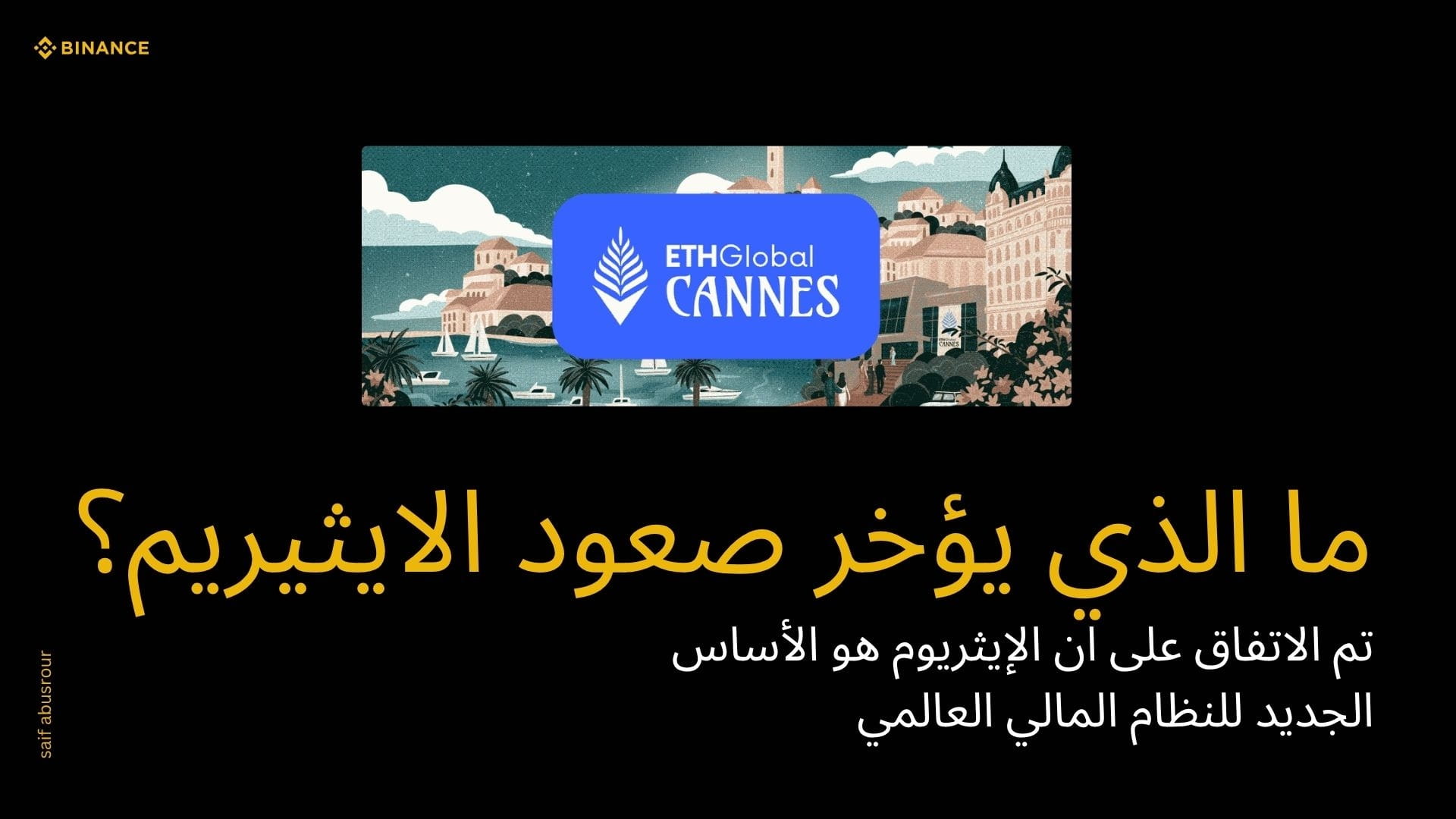
The Ethereum conference $ETH for 2025 concluded its activities in the French city of Cannes, amid an atmosphere that clearly indicates a qualitative shift in Ethereum's position within the global financial map. This conference was not like its predecessors in terms of character or attendance; it was distinguished this year by its practical and institutional nature, as the focus shifted away from technical details in favor of the participation of major financial entities actively working on Ethereum-based financial applications and solutions.
What stood out in this year's edition was not only the nature of the discussions but also the quality of the initiatives announced. The "Robinhood" platform revealed its launch of trading U.S. stocks in the form of tradable digital tokens on the "Arbitrum" network, which is a second layer built on Ethereum. Thus, Robinhood became the first publicly traded company in the United States to officially offer this type of asset on the blockchain, paving the way for a complete restructuring of the stock market in the future.
In this context, the conference witnessed active participation from major financial institutions, including "BlackRock", "Deutsche Bank", "Coinbase", and "Kraken", where these entities presented practical solutions such as secure systems for safeguarding the digital assets of large investors, tokenization of real assets, and financial settlement structures based on Ethereum as the primary infrastructure these solutions rely on.
Choosing the city of Cannes to host this event was not a random decision. The location, known for its film festival and association with the world of luxury brands, clearly reflects the intention of the conference organizers to present Ethereum as a high-end financial interface capable of accommodating major players in the global market, rather than merely an open development environment for programmers and innovators.
Nevertheless, the technical aspect was not sidelined. Discussions continued around the latest developments in infrastructure, including zero-knowledge proofs, account abstraction, restaking protocols, and new decentralized finance applications, such as on-chain fund management and carbon asset tokenization. Data showed that Ethereum topped all blockchains in terms of developmental activity on the GitHub platform, reflecting the continued momentum of innovation at the grassroots level.
Despite these achievements, a fundamental question resonates among participants: "Why hasn't Ethereum's price risen to new levels yet, despite these positive indicators?" The answer lies in a mix of factors, most notably the continued regulatory uncertainty in the United States, the absence of stimulating narratives after the momentum of Bitcoin exchange-traded funds waned, along with a decrease in risk appetite due to unstable global economic conditions.
However, observers see that this stage of institutional building represents a clear preparation for the next cycle, and the transformation in the market structure has indeed begun, even if it has not yet appeared on the price curves.
Accordingly, the "Ethereum - Cannes 2025" conference was not just a technical event or a gathering of the developer community; it was a symbolic and actual announcement of Ethereum's transition from the experimental phase to broad financial adoption. The question remains: will individual investors and small institutions be able to keep pace with this transformation before prices outpace them?
